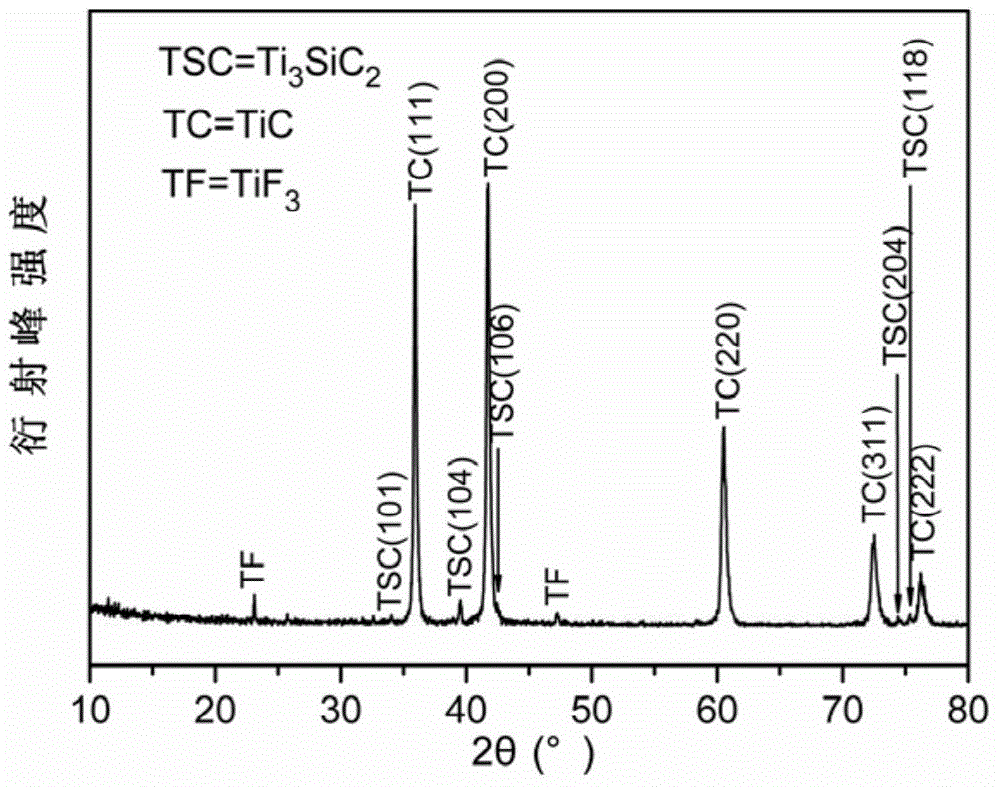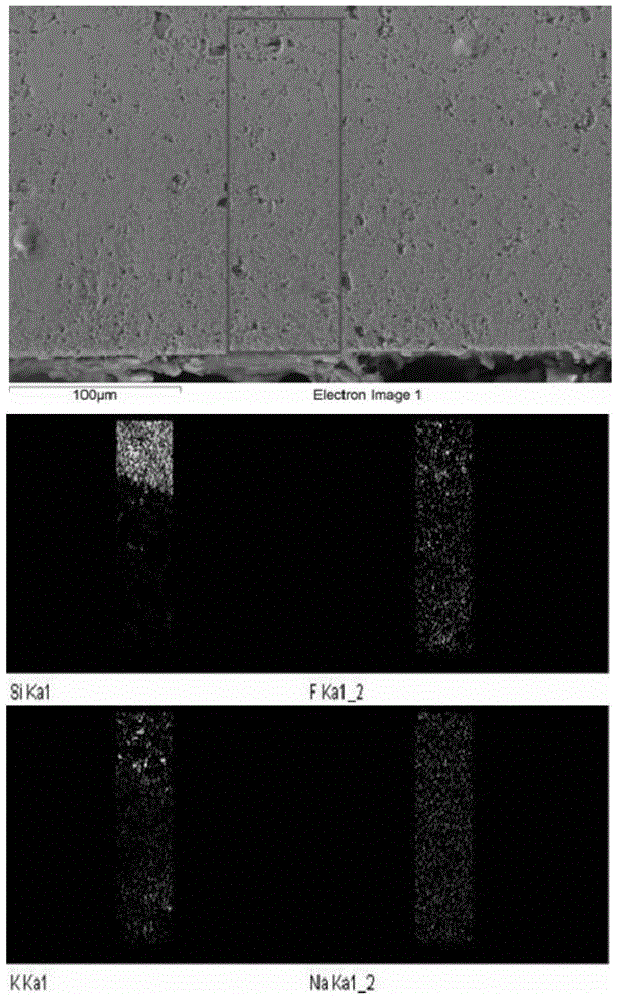Production method of nuclear fuel clad element
A technology for cladding elements and nuclear fuels, which is applied in the field of preparation of ceramic cladding tubes for nuclear fuels, can solve problems such as lack of protection, achieve simple and easy methods, good mechanical properties and thermal conductivity, and overcome the effects of difficult processing.
- Summary
- Abstract
- Description
- Claims
- Application Information
AI Technical Summary
Problems solved by technology
Method used
Image
Examples
Embodiment 1
[0051] In this example, using Ti 3 SiC 2 Materials for the preparation of nuclear fuel cladding tubes.
[0052] First to commercial Ti 3 SiC 2 The bulk ceramic materials were subjected to the corrosion resistance test of molten fluorine salts.
[0053] The commercial Ti 3 SiC 2 The bulk ceramic material is prepared by powder sintering method, specifically: Weigh an appropriate amount of commercial Ti 3 SiC 2 Powder, the Ti 3 SiC 2 The powder is put into a graphite mold and pressurized in one direction to form a green body, and then put into a spark plasma sintering (SPS) furnace, heated to 1200°C in a vacuum state, and a pressure of 40MPa is applied, and the holding time is 5min.
[0054] For the Ti prepared above 3 SiC 2 The phase of the bulk material is measured and analyzed, and its XRD spectrum is as follows figure 1 As shown, it can be seen that the bulk material has high purity and low impurity content.
[0055] The Ti 3 SiC 2 The test method for the corro...
Embodiment 2
[0071] In this embodiment, first for Ti 3 SiC 2 -10wt% SiC composite bulk material was tested for corrosion resistance to molten fluorine salts.
[0072] The composite material is Ti 3 SiC 2 -10wt% SiC, the subsequent corrosion test was carried out in FLINAK molten salt at 700 °C, and the corrosion time was 8 days (192h). The specific process is as follows:
[0073] The Ti 3 SiC 2 -10wt%SiC composite bulk material with Ti 3 SiC 2 The ceramic material is used as a matrix, and SiC is used as a composite phase, and the composite phase accounts for 10wt% of the content of the matrix.
[0074] The composite block material is prepared by powder sintering method, specifically: Weigh an appropriate amount of commercial Ti 3 SiC 2 and SiC powder, mixed by ball milling, dried and put into a graphite mold, first pressurized in one direction to form a green body, and then put into a spark plasma sintering (SPS) furnace, heated to 1350°C under the protection of Ar atmosphere, and...
Embodiment 3-11
[0089] Similar to the above-mentioned Examples 1 and 2, the nuclear fuel cladding tubes were prepared by the same method in Examples 3-11 respectively, and the parameters such as raw materials, dispersants, plasticizers, binders, and sintering methods are as follows:
[0090]
[0091] Among them, SiC(f) represents silicon carbide fiber material.
PUM
| Property | Measurement | Unit |
|---|---|---|
| Thickness | aaaaa | aaaaa |
Abstract
Description
Claims
Application Information
 Login to View More
Login to View More - R&D
- Intellectual Property
- Life Sciences
- Materials
- Tech Scout
- Unparalleled Data Quality
- Higher Quality Content
- 60% Fewer Hallucinations
Browse by: Latest US Patents, China's latest patents, Technical Efficacy Thesaurus, Application Domain, Technology Topic, Popular Technical Reports.
© 2025 PatSnap. All rights reserved.Legal|Privacy policy|Modern Slavery Act Transparency Statement|Sitemap|About US| Contact US: help@patsnap.com



